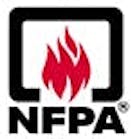A state Department of Natural Resources and Environmental control scientist was at Joe Horisk's Salvage Pool Inc. Wednesday morning searching for possible environmental hazards, such as pools of petroleum products that could seep into the groundwater, but found none.
"There was no sign of residual petroleum contamination, no sheen on puddles of water for example, and so we don't anticipate any significant environmental impact as a result of the fire," said Kurt J. Reuther, DNREC's chief of environmental enforcement. He also said there was no contamination of the nearby Christina River, where firefighters pumped water to help fight the blaze.
The state Fire Marshal's Office said the cause of the fire, which roared uncontrollably for more than three hours, is still under investigation.
About 20 fire companies from across the region, including Pennsylvania, brought water tankers. Also assisting were fire companies from the Delaware Air National Guard, Delaware River and Bay Authority, and the Premcor Inc. refinery in Delaware City. Efforts to put out the flames were hampered by a lack of water.
The size of the fire and its stubbornness made it hard to get under control, Chief Deputy State Fire Marshal Michael G. Chionchio said. The tires and fuel tanks of each salvage vehicle that burned made the flames more intense.
"It's a very difficult fire to fight," Chionchio said. "It takes a lot of water. It takes a lot of time. And it takes a lot of courage."
Horisk could not be reached for comment Wednesday.
Unlike a salvage yard, which dismantles vehicles and recycles the parts, a salvage pool stores vehicles insurance companies have deemed a total loss.
The pool auctions the vehicles and splits the proceeds with insurers. Auto dealers buy them and dismantle them for parts or resell them with "junk titles" showing that they have been in an accident. Salvage pools rarely own the vehicles they store, and insurance companies require them to carry insurance.
With 2,300 cars, Joe Horisk's Salvage Pool is a bit smaller than average, said Nancy Meltzer, president of the American Salvage Pool Association. The challenge will be determining the value of the totaled cars, she said. Fire officials said they need to examine each vehicle before they can give a damage estimate.
Wednesday morning it was business as usual along Old Airport Road. There was no evidence of soot on cars and no unusual smells along the narrow road that is home to several salvage yards and other companies.
"It was a concern last night," said George Middleton, transportation manager for the Red Clay Consolidated School District. The district's transportation offices are about a quarter mile from the site.
Middleton gave his phone number to firefighters before leaving for the night.
"I told them that if it got out of control and started heading toward our buses to call me so we could move our equipment out of the way, but they got it under control," Middleton said.
Related:






